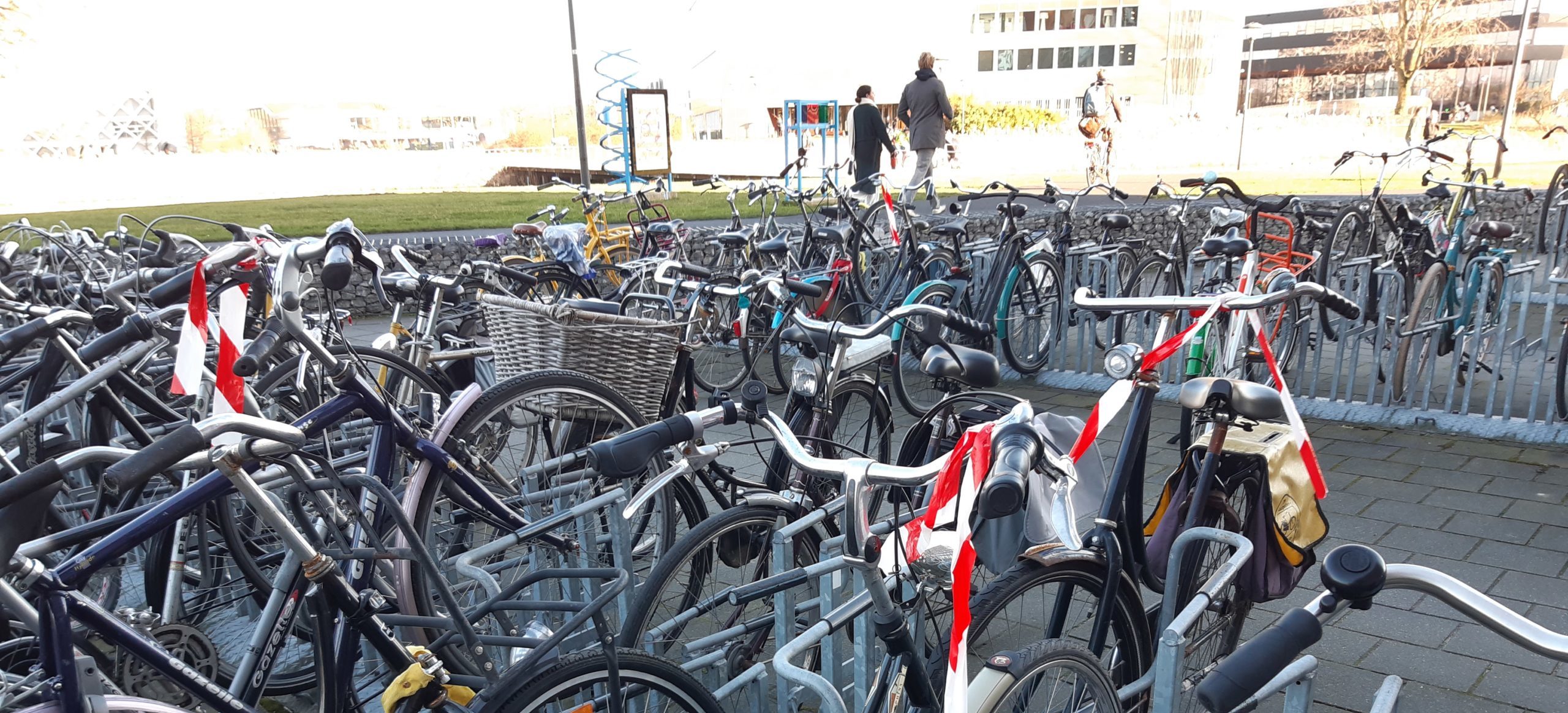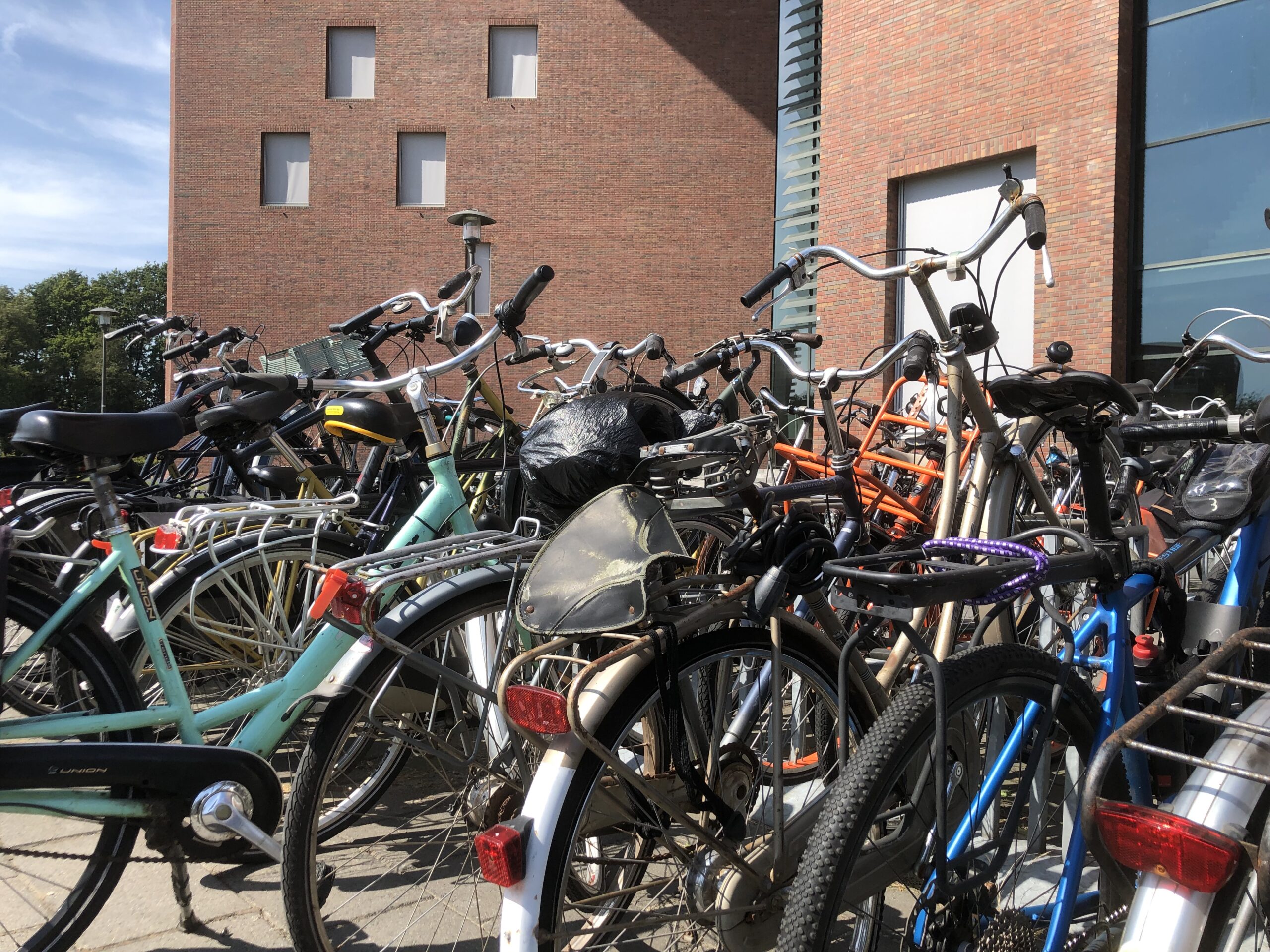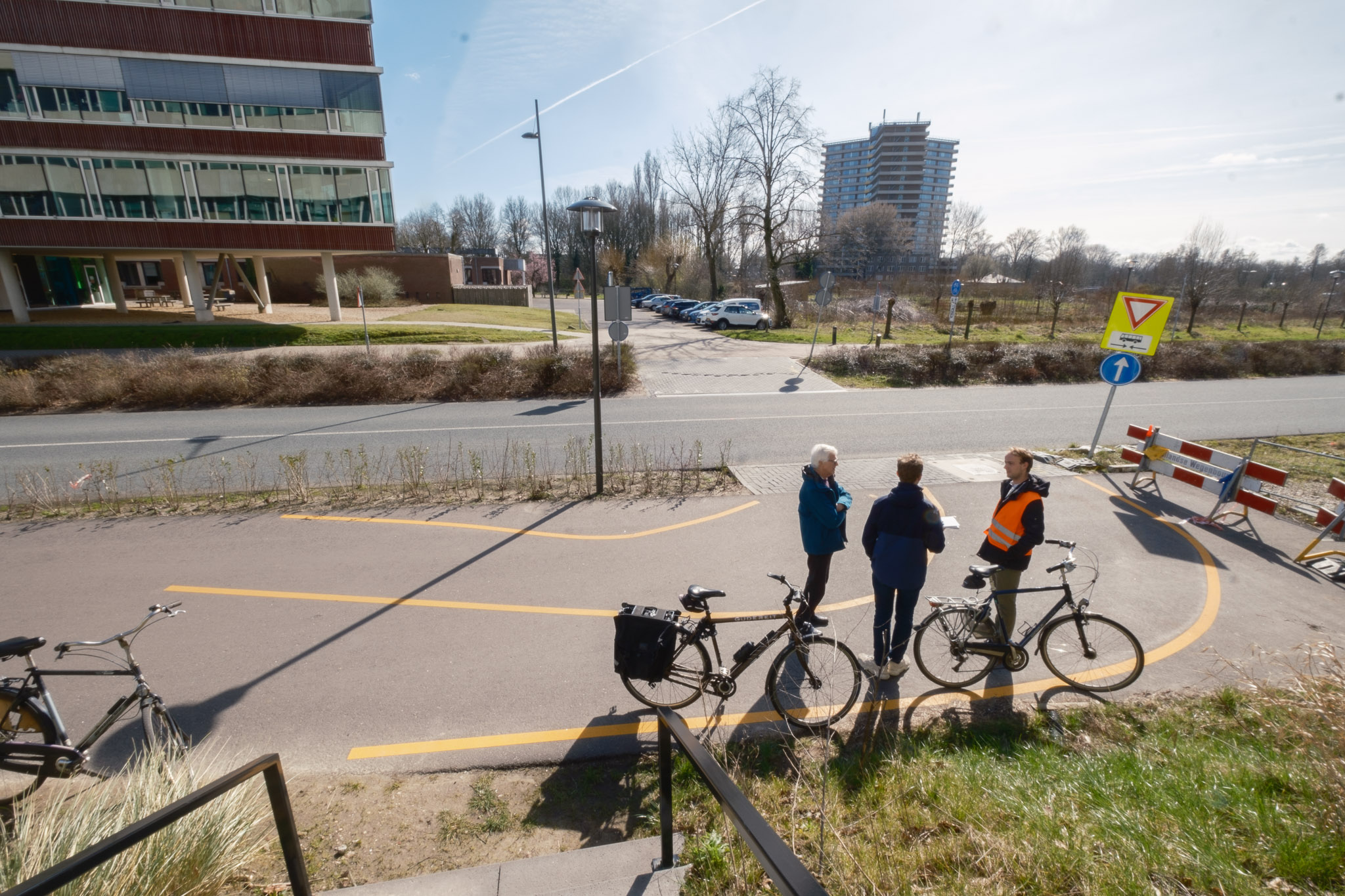When you come to the campus by bike, you may have noticed the red and white striped tape adorning some bikes. You may even have found one on your own bike. In that case: removing it is your best option, as marking abandoned bikes with red and white tape is the first step in WUR’s bike-removal process.
Thus states Susan Reedijk, the newly appointed park manager responsible for this process. How are the bikes removed? And, must you rush to the campus to save your bike? Or do you still have some time?
‘There is still time’, Reedijk says. In the first week of February, my colleagues who work at the various buildings on the campus tied the red and white tape to bikes that had been parked for a long time and whose owners are unknown. We have not tied take around every bike; that would have been too much work. If you are the owner and still use the bike, you can simply remove the tape. In March, the bicycles on which there is still tape present will be labelled. From then on, you have one month to collect your bike and remove the label. All bicycles that still have a label in April will be collected and removed in the first week of May.’
Throughout the campus
This is the first time that abandoned bikes are removed on the entire campus through this process, Reedijk states. ‘Previously, each location had its own process’. The removal process, which takes several months, is to take place twice a year. ‘The removals will start in February and August. The removed bikes are taken to a business specialised in bike wrecks, where re-usable parts will be identified.’ Because the parts will be removed, you will be unable to reclaim your bicycle once it has been removed.
How do you know whether a bike has been abandoned? ‘Bikes that are still parked when the building is opened in the early morning stand out’, Reedijk clarifies. ‘Especially if they remain in the same spot and show signs of damage.’
Previous removals yielded dozens of abandoned bikes. ‘It has been a while, so we expect there to be more this time. I don’t have precise data from previous years.’

 Want to continue using this bike? Remove the red and white tape. Photo Luuk Zegers
Want to continue using this bike? Remove the red and white tape. Photo Luuk Zegers 

